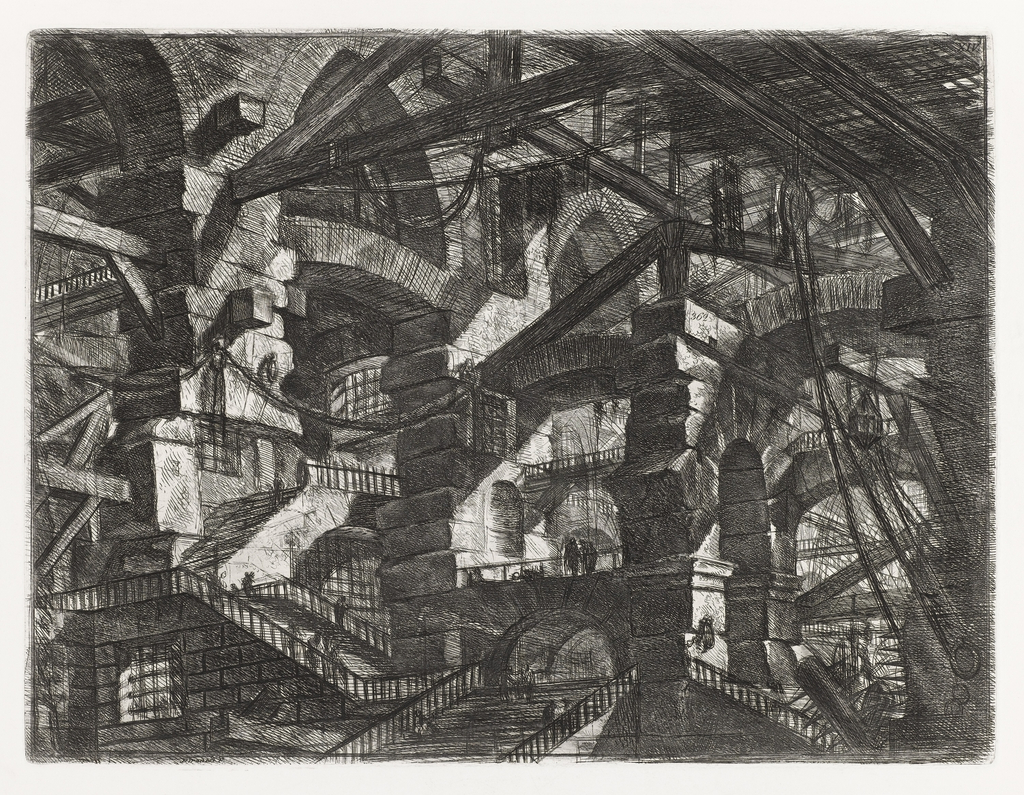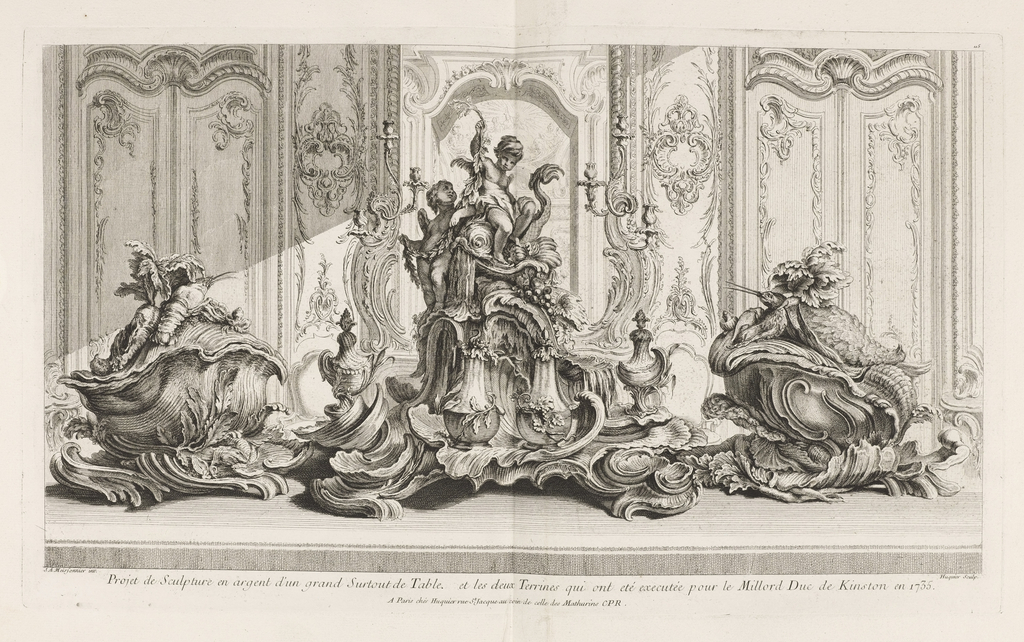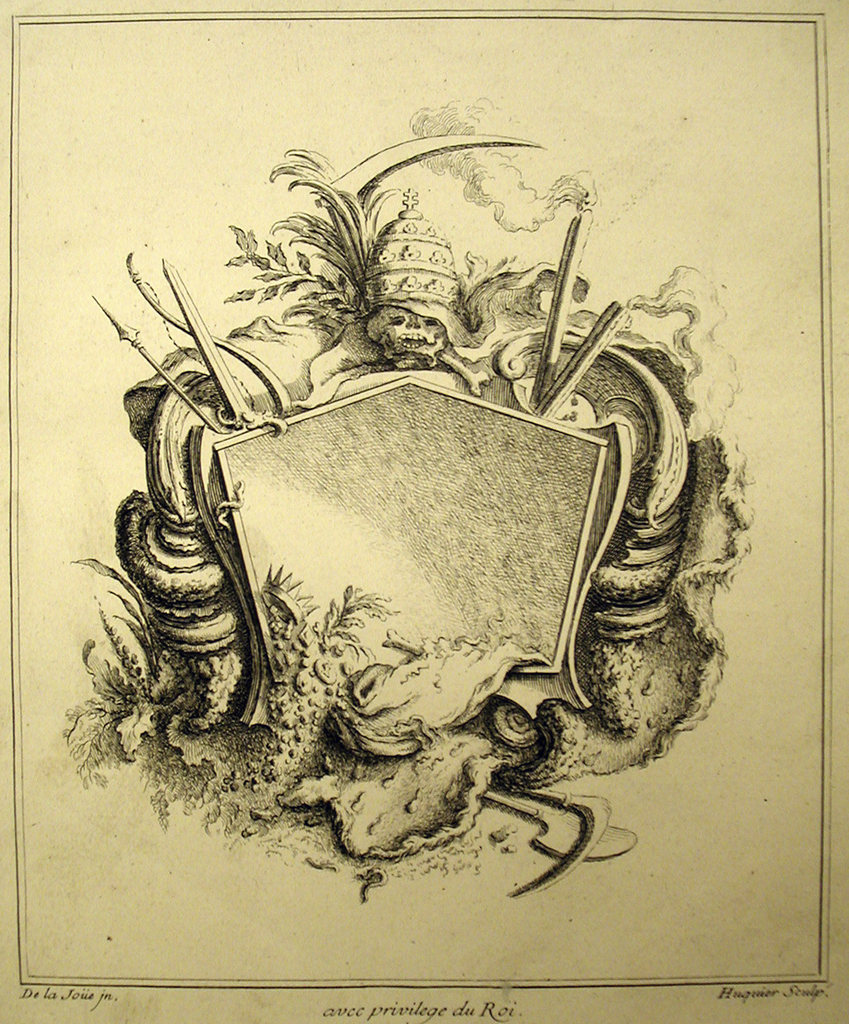Prison design has been a topic of debate and a site for innovation, even in the eighteenth century. This etching is Plate 14 from a series of imaginary prison interiors designed by the Roman architect, designer, and print maker, Giovanni Battista Piranesi (1720- 1778). This print is both an exploration of the limits of the...
Eighteenth-century meal services were elaborate affairs, as exemplified in this print showing tureens and a table center piece designed by Juste-Aurèle Meissonnier for Evelyn Pierrepont, Duke of Kingston-upon-Hull in the 1730s. Meissonnier worked for Louis XV, becoming orfèvre du roi (goldsmith to the king) in 1724. This engraving is plate 115 in folio 72 of...
This is a design for a cartouche by the French académician, ornemaniste, and painter Jacques de Lajoüe (1687- 1761). It was etched by Gabriel Huquier as plate 4 in his Second book of Cartouches (Deuxième livre de Cartouches), which was published in 1734 (as established by Roland Michel). The ascribed date locates this at a...
Piranesi’s originality lay in his eclecticism. Pulling together influences from Egyptian, Etruscan, Ancient Roman, and Greek designs, Piranesi presented a hybrid design system that was rooted in his commitment to the stature and importance of the Roman design heritage. From this starting point, the architectural elements move from historical recreations to articulated fantasy. While his...


